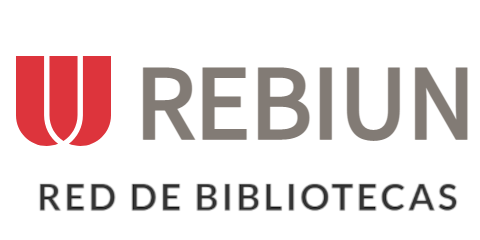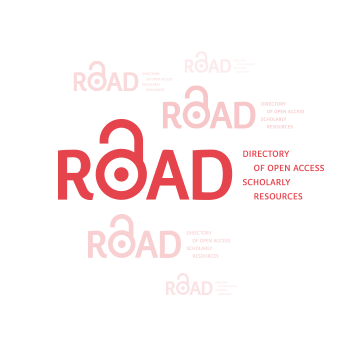Historical review of the geological cartography in Ecuador.
Resumen
Since 1892, seven versions of the national geological map of the Republic of the Ecuador have been published. In 1892, Dr. Theodor Wolf, of the German Scientific Mission, published the 1st map which included a preliminary geomorphological description. Later, Dr. Walther Sauer with the support of the Universidad Central del Ecuador (Central University of Ecuador), published a 2nd version in 1950, and then an update in 1970, both included oil wells information. In 1969, the Servicio Nacional de Geología y Minería del Ecuador (National Service of Geology and Mining of Ecuador), and Institut Français du Pétrole (French Petroleum Institute), published the 3rd version which included a mineralogical index. The 4th version was developed by the Dirección General de Geología y Minas del Ecuador (General Directorate of Geology and Mines of Ecuador) and Institute of Geological Sciences & Natural Environment Research Council, and was published in 1982, it included a geological model from a plate tectonics approach. Later, in 1993, the Corporación de Desarrollo e Investigación Geológico Minero y Metalúrgica del Ecuador (Geological, Mining and Metallurgical Research and Development Corporation of Ecuador) and the British Geological Survey published a 5th version, which included an overview of mineral occurrences on the Ecuadorian Andes. On the 21st. century, in 2001 was published the 6th version, that consisted of a reviewed national geological map, which included data transferring to the geographical information system ArcGis. Ultimately in 2017, the Instituto Nacional de Investigación Geológico Minero Metalúrgico (National Institute of Geological-Mineral-Metallurgical Research), published the 7th version, incorporating the last updated geological results of previous campaigns. Every version contributed to the understanding of the regional geodynamic framework. Nevertheless, in the last two decades, informal coding of units for the geological cartography, thrived, involving a lack of characterization and descriptions of representative outcrops, along with uncertainties on geochronological control for newly mappable defined units, reduce reliability on the national geological cartography, increasing the uncertainties for the understanding the regional geodynamic framework.
Descargas
Citas
Álvarez Marcillo, K. M. (2020). Fragmentos del trabajo de los exploradores e investigadores durante las primeras investigaciones geológicas y prospecciones petroleras y las dinámicas sociales, económicas y de asentamiento en el oriente ecuatoriano (Fragments of the work of explorers and researchers during the first geological investigations and oil prospecting and the social, economic and settlement dynamics in eastern Ecuador) (1920–1950)
Armijos, M. T., Phillips, J., Wilkinson, E., Barclay, J., Hicks, A., Palacios, P., Mothes P., & Stone, J. (2017). Adapting to changes in volcanic behaviour: Formal and informal interactions for enhanced risk management at Tungurahua Volcano, Ecuador. Global Environmental Change, 45, 217-226. https://doi.org/10.1016/j.gloenvcha.2017.06.002
Aspden, J. A., & Litherland, M. (1992). The geology and Mesozoic collisional history of the Cordillera Real, Ecuador. Tectonophysics, 205(1-3), 187-204.
Aspden, J., Bermúdez, R., Viteri, F., & Pozo, M. (1990). La Geología y Potencial Mineral De La Cordillera Real, Ecuador (Bachelor's thesis, ESPOL. FICT).
ASTUDILLO, S. M., & TOBAR, H. C. (1995). Instituto Ecuatoriano de Recursos Hidricos INERHI (Ecuatorian Institute of Water Resources), Quito, Ecuador. Estudios de hidrología isotópica en América Latina (Isotope hydrology studies in Latin America) 1994, 211.
Baize, S., Audin, L., Alvarado, A., Jomard, H., Bablon, M., Champenois, J., Espin, P., Samaniego, P., Quidelleur, X., & Le Pennec, J. L. (2020). Active tectonics and earthquake geology along the Pallatanga Fault, Central Andes of Ecuador. Frontiers in Earth Science, 8, 193. https://doi.org/10.3389/feart.2020.00193
Baldock, J. W. (1982). Geology of Ecuador: Explanatory Bulletin of the National Geological Map of the Republic of Ecuador: 1: 1,000,000 Scale. Ministerio de Recursos Naturales y Energéticos, Dirección General de Geología y Minas (Ministry of Natural Resources and Energy, General Directorate of Geology and Mines).
Barnes, J. W., & Lisle, R. J. (2013). Basic geological mapping. John Wiley & Sons.
Bravo Cedeño, M. A. (2010). Interpretación del estudio multitemporal (Interpretation of the multitemporal study) (CLIRSEN 1969-2006) de las coberturas de manglar, camaroneras y áreas salinas en la franja costera del Ecuador (of mangrove covers, shrimp farms and saline areas in the coastal strip of Ecuador) (Master's thesis).
Carretier, S., Audemard, F., Audin, L., Hidalgo, S., Le Pennec, J. L., Mora, H., ... & Samaniego, P. (2022). Introductory paper of the 8th International Symposium on Andean Geodynamics (ISAG) special number. Journal of South American Earth Sciences, 116, 103802.
Carrión-Mero, P., Duenas-Tovar, J., Jaya-Montalvo, M., Berrezueta, E., & Jiménez-Orellana, N. (2022). Geodiversity assessment to regional scale: Ecuador as a case study. Environmental Science & Policy, 136, 167-186. https://doi.org/10.1016/j.envsci.2022.06.009
Centro de Levantamiento Integrados de Recursos Naturales (Integrated Center for Natural Resources Surveys) CLIRSEN. (1981). Explicación del compendio de aerofotografías del Ecuador, obtenidas desde 1970 a 1980. Ministerio de Minas. (Explanation of the compendium of aerophotographs of Ecuador, obtained from 1970 to 1980. Ministry of Mines.) Quito-Ecuador. V. 4. Pp.34.
Comisión Ecuatoriana de Energía Atómica CEEA (1980) (Ecuadorian Atomic Energy Commission) Prospección de minerales y fuentes radioactivas en el Ecuador. Ministerio de Minas (Prospecting of minerals and radioactive sources in Ecuador. Ministry of Mines.) Quito-Ecuador. V. 1. Pp.22.
Corporación de Desarrollo e Investigación Geológico Minero y Metalúrgica CODIGEM (Geological, Mining and Metallurgical Research and Development Corporation of Ecuador) and British Geological Survey-BGS, (1993). Memoria del Mapa geológico de la República Del Ecuador (Memory of the Geological Map of the Republic of Ecuador) Escala, 1, 1000000. Ministerio de Recursos Naturales y Energéticos (Scale, 1, 1000000. Ministry of Natural Resources and Energy) Quito-Ecuador. V.1. pp.10
Costa, C., Alvarado, A., Audemard, F., Audin, L., Benavente, C., Bezerra, F. H., Cembrano, J., González, G., López, M., Minaya, E., Santibañez, I., Garcia, J., Arcila, M., Pagani, M., Pérez, I., Delgado, F., Paolini M., Garro, H. (2020). Hazardous faults of South America; compilation and overview. Journal of South American Earth Sciences, 104, 102837. https://doi.org/10.1016/j.jsames.2020.102837
Champenois, J., Baize, S., Vallée, M., Jomard, H., Alvarado, A., Espin, P., Samaniego, P., Quidelleur, X., & Audin, L. (2017). Evidences of surface rupture associated with a low‐magnitude (M w 5.0) shallow earthquake in the Ecuadorian Andes. Journal of Geophysical Research: Solid Earth, 122(10), 8446-8458. https://doi.org/10.3389/feart.2020.00193
Dirección General de Geología y Minas D.G.G.M (General Directorate of Geology and Mines) and Natural Environment Research Council NERC (1982). National Geological Map of the Republic of Ecuador, scale 1: 1,000,000. Minist. de Recursos Nat. y Energéticos (Minist. of Natural and Energy Resources), Quito.
Dirección General de Geología y Minas D.G.G.M (General Directorate of Geology and Mines) (1982a). Compendio bibliografico del Mapa Geológico de la Republica del Ecuador. Ministerio de Recursos Naturales y Energéticos (Bibliographic compendium of the Geological Map of the Republic of Ecuador. Ministry of Natural Resources and Energy) Quito-Ecuador. V. 1. Pp.15.
Dirección Nacional de Geología DINAGE (National Directorate of Geology ) (2001). Mapa Geológico del Ecuador, escala 1:1 000 000. Ministerio de Recursos Naturales y Energéticos (Geological map of Ecuador, scale 1:1,000,000. Ministry of Natural Resources and Energy) Quito-Ecuador.
Dirección Nacional de Geología DINAGE (National Directorate of Geology ) (2006). Informe: Compendio de investigaciones realizadas por la Dirección Nacional de Geología. Ministerio de Recursos Naturales y Energéticos. (Report: Compendium of research conducted by the National Directorate of Geology. Ministry of Natural Resources and Energy.) Quito-Ecuador. V.1. pp.310
Dougherty, K. (2013). Getting to the core of geology LibGuides. Science & Technology Libraries, 32(2), 145-159.
Duffy, T. R., Boisvert, E., Cox, S., Johnson, B. R., Raymond, O., Richard, S. M., Robida F., Serrano J., Simons B., & Stolen, L. K. (2006). The IUGS-CGI international geoscience information interoperability test-bed. In XIth International Congress of the International Association for Mathematical Geology.
Flint, N. K. (1967). Geological Education in Ecuador. Journal of Geological Education, 15(4), 135-140.
Gemuts, I., Lopez, G., & Jimenez, F. (1992). Gold deposits of southern Ecuador. SEG Discovery, (11), 1-16.
Gómez-Luna, E., Fernando-Navas, D., Aponte-Mayor, G., & Betancourt-Buitrago, L. A. (2014). Metodología para la revisión bibliográfica y la gestión de información de temas científicos, a través de su estructuración y sistematización (Methodology for the bibliographic review and information management of scientific topics, through their structuring and systematization) Dyna, 81(184), 158-163.
Guillén, C. C. (2021). Historia de la industria del Ecuador: (History of the industry of Ecuador:) 1920-2020. Boletín Academia Nacional de Historia (National Academy of History Bulletin) 99(205), 245-283.
Herrera-Franco, G., Montalván-Burbano, N., Carrión-Mero, P., Apolo-Masache, B., & Jaya-Montalvo, M. (2020). Research trends in geotourism: A bibliometric analysis using the scopus database. Geosciences, 10(10), 379.
Hungerbühler, D., Steinmann, M., Winkler, W., Seward, D., Egüez, A., Peterson, D. E., ... & Hammer, C. (2002). Neogene stratigraphy and Andean geodynamics of southern Ecuador. Earth-Science Reviews, 57(1-2), 75-124.
Instituto de Investigación Geológico y Energético IIGE (Geological and Energy Research Institute) (2019). Estándares de Nomenclatura Estratigráfica, Simbolización y Abreviaturas para la Cartografía Geológica (Standards of Stratigraphic Nomenclature, Symbolization and Abbreviations for Geological Mapping). Ministerio de Energía y Recursos Naturales No Renovables (Ministry of Energy and Non-Renewable Natural Resources) Quito-Ecuador.
Instituto Ecuatoriano de Minería INEMIN (Ecuadorian Institute of Mining) (1985). Proyecto Actualización del Mapa geológico de la Republica del Ecuador. Ministerio de Recursos Naturales y Energéticos. (Project Update of the Geological Map of the Republic of Ecuador. Ministry of Natural Resources and Energy) Quito-Ecuador. V. 1. Pp.79.
Instituto Nacional de Investigación Geológico Minero Metalúrgico INIGEMM (National Institute of Geological Mining and Metallurgical Research) (2017). Mapa geológico de la Republica del Ecuador, escala 1:1 000 000. Ministerio de recursos no renovables del Ecuador (Geological map of the Republic of Ecuador, scale 1:1 000 000. Ministry of Non-Renewable Resources of Ecuador) Quito – Ecuador.
International Union of Geological Sciences IUGS, (2019). The geoscience standards factory: the successful experience of IUGS/CGI and OGC. In Robida, F., Minghua, Z., Harrison, M., & Beaufils, M. CODATA 2019-Towards next-generation data-driven science: policies, practices, and platforms. ELSEVIER. V.5. pp.42-87.
Jenks, W. F. (1956). Handbook of South American Geology (Vol. 65). Geological Society of America.
Karpatne, A., Ebert-Uphoff, I., Ravela, S., Babaie, H. A., & Kumar, V. (2018). Machine learning for the geosciences: Challenges and opportunities. IEEE Transactions on Knowledge and Data Engineering, 31(8), 1544-1554. https://doi.org/10.1109/TKDE.2018.2861006
Kennerley, J. B. (1980). Outline of the geology of Ecuador. Ministerio de Energia y Minas del Ecuador (Ministry of Energy and Mines of Ecuador) Quito-Ecuador.
Kimerling, A. J., Muehrcke, P. C., Muehrcke, J. O., & Muehrcke, P. M. (2016). Map use: reading, analysis, interpretation. ESRI Press Academic.
Lisle, R. J., Brabham, P., & Barnes, J. W. (2011). Basic geological mapping (Vol. 35). John Wiley & Sons.
Litherland, M. (1994). The metamorphic belts of Ecuador. Overseas Mem Br Geol Surv, 11, 1-147.
Loughlin, S. C., Sparks, R. S. J., Brown, S. K., Jenkins, S. F., & Vye-Brown, C. (Eds.). (2015). Global volcanic hazards and risk. Cambridge University Press.
Lynner, C., Koch, C., Beck, S. L., Meltzer, A., Soto-Cordero, L., Hoskins, M. C., Stachnik, J. C. Ruiz, M. Alvarado, A. Charvis, P. Font, Y. Regnier, M. Detzel, H. A. Rietbrock A. & Porritt, R. W. (2020). Upper-plate structure in Ecuador coincident with the subduction of the Carnegie Ridge and the southern extent of large mega-thrust earthquakes. Geophysical Journal International, 220(3), 1965-1977. https://doi.org/10.1093/gji/ggz558
Miles, M. B., Huberman, A. M., & Saldaña, J. (2018). Qualitative data analysis: A methods sourcebook. Sage publications.
Murphy, M. A., & Salvador, A. (1999). International stratigraphic guide—an abridged version. Episodes Journal of International Geoscience, 22(4), 255-271.
Nocquet, J. M., Jarrin, P., Vallée, M., Mothes, P. A., Grandin, R., Rolandone, F., Delouis, B., Yepes, H., Font, Y., Fuentes, D., Régnier, M., Laurendeau, A., Cisneros, D., Hernandez, S., Sladen, J.-C. Singaucho, A., Mora, H., Gomez, J., Montes L. & P. Charvis. (2017). Supercycle at the Ecuadorian subduction zone revealed after the 2016 Pedernales earthquake. Nature Geoscience, 10(2), 145-149. https://doi.org/10.1038/ngeo2864
Ochoa-Tocachi, B. F., Bardales, J. D., Antiporta, J., Pérez, K., Acosta, L., Mao, F., Zulkafli, Z., Gil-Ríos, J., Angulo, O., Grainger, S., Gammie, G., De Bièvre B., & Buytaert, W. (2019). Potential contributions of pre-Inca infiltration infrastructure to Andean water security. Nature Sustainability, 2(7), 584-593. https://doi.org/10.1038/s41893-019-0307-1
Okoli, C., & Schabram, K. (2010). A guide to conducting a systematic literature review of information systems research.
Periferakis, A. (2019a). The influence of ore deposits to the development and collapse of the Inca civilisation between the 15th and 16th century. In Proceedings of the 15th International Congress of the Geological Society of Greece (pp. 22-24).
Periferakis, A. (2019b). A review of obsidian source exploitation in pre-columbian south America. Bulletin of the Geological Society of Greece, 55, 65-108. https://orcid.org/0000-0002-8319-7464
Pratt, W. T., Duque, P., & Ponce, M. (2005). An autochthonous geological model for the eastern Andes of Ecuador. Tectonophysics, 399(1-4), 251-278.
Premoli, C. (1983). Uranium exploration in the Northern Andes. In Uranium exploration in wet tropical environments.
Proyecto de Desarrollo Minero y Control Ambiental PRODEMINCA (Mining Development and Environmental Control Project) (2000). Depósitos epitermales en la Cordillera Andina. Evaluación de Distritos Mineros del Ecuador (Epithermal deposits in the Andean Cordillera. Evaluation of Mining Districts of Ecuador), 2, 36-55.
Rassmuss, J. E. (1966). Increase in oil development is in prospect in Ecuador. World Oil;(United States), 162(7).
Restrepo Morantes, M. I. (2022). Teodoro Wolf y el conocimiento geográfico del Ecuador (Teodoro Wolf and the geographical knowledge of Ecuador), 1875-1895: redes de relaciones en la producción de saber y orden simbólico del territorio (networks of relationships in the production of knowledge and symbolic order of the territory) (Master's thesis, Quito, EC: Universidad Andina Simón Bolívar, Sede Ecuador). (Univserity of Andina Simón Bolívar, Ecuador Headquaters).
Reyes, P., & Michaud, F. (2012). Mapa Geológica de la margen costera ecuatoriana (Geological map of the Ecuadorian coastal margin) (1: 500000). IRD-EPN. Quito-Ecuador.
Riccardi, A. C. (2011). IUGS, Conventions, Symbols, Recommendations and Consensus. Episodes Journal of International Geoscience, 34(4), 269-269.
Rivadeneira, M. (2004). Breve reseña histórica de la exploración petrolera de la Cuenca Oriente. La cuenca Oriente: geología y petróleo. Lima, Perú. (Brief historical review of oil exploration in the East Basin. The Oriente basin: geology and oil. Lima, Peru) IFEA Instituto Francés de Estudios Andinos (French Institute of Andean Studies) ,205-228.
Romei, A., & Ruggieri, S. (2013). Discrimination data analysis: a multi-disciplinary bibliography. In Discrimination and Privacy in the Information Society (pp. 109-135). Springer, Berlin, Heidelberg.
Sauer, W. (1965). Geología del Ecuador: Quito. Ministerio de Educación (Geology of Ecuador: Quito. Ministry of Education), 1971.
Sauer, W. (1971). Geologie von Ecuador. In German scientific missions in South America. German Scientific Society. V. 1. Pp. 78-84.
Servicio Nacional de Geología y Minería - S.N.G.M. (Servicio Nacional de Geología y Minería) (1969). Proyecto Mapa Geológico de la Republica del Ecuador. Ministerio de Industrias y Comercio del Ecuador (Geological Map Project of the Republic of Ecuador. Ministry of Industry and Commerce of Ecuador) Quito-Ecuador. V. 1., pp. 10.
Servicio Nacional de Geología y Minería SNGM (National Geology and Mining Service) and French Institute for Petroleum (IFP). (1969). Geological Map of the Republic of Ecuador, scale 1:1 000 000. Ministerio de Industria y Comercio (Ministry of Industry and Commerce). Quito-Ecuador.
Sevilla A., Sevilla E., Medina A. (2021) La Escuela Politécnica de Quito, la Compañía de Jesús (1869-1877) y los jesuitas alemanes (The Polytechnic School of Quito, the Society of Jesus (1869-1877) and the German Jesuits.). Tres aproximaciones a la influencia del mundo germano en el Ecuador del siglo XIX y XX. El alemán y el Ecuador magnético, El Fakir-Kultura-Red Cultural Alemana. ⟨hal-03453871⟩. Vol. 35. No.2.(Three approaches to the influence of the German world in nineteenth- and twentieth-century Ecuador. The German and the magnetic Ecuador, The Fakir-Kultura-German Cultural Network. ⟨hal-03453871⟩. Vol. 35. No.2.)
Soto, J., & Taco Villalba, L. (1980). Proyección de los requerimientos de ingenieros para INECEL en el quinquenio (Projection of the requirements of engineers for INECEL in the quinquennium) 80 85. QUITO/INECEL/1980.
Spencer, E. W. (2017). Geologic maps: A practical guide to preparation and interpretation. Waveland Press.
Spikings, R., Cochrane, R., Villagomez, D., Van der Lelij, R., Vallejo, C., Winkler, W., & Beate, B. (2015). The geological history of northwestern South America: from Pangaea to the early collision of the Caribbean Large Igneous Province (290–75 Ma). Gondwana Research, 27(1), 95-139.
Sweitzer, M. (2020). A Study of Materialization, Identity, and Agency Using Pxrf Analysis of Ceramics from Inca Period Ecuador (Doctoral dissertation, The University of North Carolina at Charlotte). https://www.proquest.com/openview/dd770954ee3af1c56d42a9f49f78e877/1?pq-origsite=gscholar&cbl=18750&diss=y
Tearpock, D. J., & Bischke, R. E. (2002). Applied subsurface geological mapping with structural methods. Pearson Education.
Tziavou, O., Pytharouli, S., & Souter, J. (2018). Unmanned Aerial Vehicle (UAV) based mapping in engineering geological surveys: Considerations for optimum results. Engineering Geology, 232, 12-21.
Vai, G. B. (2001). Structure and stratigraphy: an overview. Anatomy of an orogen: the Apennines and adjacent Mediterranean basins, 15-31.
Whitmeyer, S. J., & Dordevic, M. (2021). Creating virtual geologic mapping exercises in a changing world. Geosphere, 17(1), 226-243. https://doi.org/10.1130/GES02308.1
Whitmeyer, S. J., Nicoletti, J., & De Paor, D. G. (2010). The digital revolution in geologic mapping. Gsa Today, 20(4/5), 4-10. https://doi.org/10.1130/GSATG70A.1
Wolf, T. (1879). Viajes cientificos por la Republica del Ecuador (Vol. 1) (Scientific trips through the Republic of Ecuador). Imprenta del Comercio (Printing of Commerce).
Wolf, T. (1892). Geografía y geología del Ecuador; publicada por órden del supremo gobierno de la república por Teodoro Wolf. Tipografía de FA Brockhaus (Geography and geology of Ecuador; published by order of the supreme government of the republic by Theodore Wolf. Typography by FA Brockhaus).
Yepes, H., Chatelain, J. L., & Guillier, B. (1994). Estudio del riesgo sísmico en el Ecuador. Conferencias por los 20 años de ORSTOM en Ecuador (Study of seismic risk in Ecuador. Conferences for the 20 years of ORSTOM in Ecuador), 161-164.
Derechos de autor 2023 Christian Wladimir Romero-Cóndor ;Leyla Lisbeth Oñate Acurio;Stalyn David Paucar-Ayala;José Luis Herrera-Robalino;Héctor Georgy Freire Cabrera;Andrea Verónica Albán-Villacreces;Carmen Roció Sangucho-Montenegro;María Elena Veliz-Zambrano

Esta obra está bajo licencia internacional Creative Commons Reconocimiento 4.0.









.jpg)
























